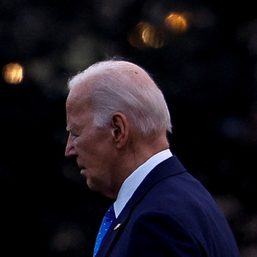SUMMARY
This is AI generated summarization, which may have errors. For context, always refer to the full article.
MANILA, Philippines – Most people are left mystified upon watching a gymnastics routine – the jumps, twists, flips, and other displays that take years to master.
Unlike other competitive games, scores are not instant in this sport. It’s not about who shoots the most number of goals. Gymnasts are judged by a panel, depending on certain criteria. Points are deducted from or awarded to the athletes depending on how they fare in their performance. There are also varying degrees of difficulty for each skill performed. Scores are then tallied to determine the winner.
Gymnastics is usually thought of as an elite sport because practicing and performing it would entail a lot of equipment. This does not, however, deter athletes from middle class families from excelling in the said sport.
Ricardo Otero, a former Southeast Asian Games champion who now coaches gymnasts, told Rappler that most athletes in the Mens Artistic Gymnastics (MAG) division are usually in this socio-economic bracket. These are the athletes that are mainly in need of financial support.
In the Philippines, scholarships and free training programs have been given to gifted athletes. Otero said that this year, two young athletes are being sent to China by the Gymnastics Association of the Philippines (GAP) to train in preparation for the Youth Olympic games.
The athletes and coaches continue to depend on the continuing support of GAP, the Philippine Sports Commission, and other agencies that may come to their aid.
Even with these adversities, hope in the sport has not been lost.
The country has produced the likes of Bea Lucero (Gold, 1985 SEA Games), Roel Ramirez (Gold, 2005 SEA Games), and Nica Calapatan (Bronze, 2005 SEA Games; Gold, 2008 National Ranking Meet).
Time and time again, however, sports has been left at the wayside due to politics. GAP, the recognized gymnastics federation in the country, is witness to its detrimental effects. After producing SEA games champions from 1990-2005, the progress of gymnastics halted in the following years due to financial constraints and internal conflicts in the National Sports Association.
After the election of GAP’s new board in 2010, the association now works tirelessly to improve the state of the sport in the country. Part of this overhaul is sending coaches to training camps which results in better training programs for our athletes.
GAP aims to promote gymnastics in the Philippines, and they hope to produce a Filipino that will champion in the world arena.
Palaro gymnasts
In next week’s Palarong Pambansa, grade and high school students nationwide will be competing in 3 gymnastics games: Women’s Artistic Gymnastics (for elementary and high school students), Men’s Artistic Gymnastics (for elementary and high school students), and Rhytmic Gymnastics (for elementary and high school girls).
Gymnastics has two divisions – artistic gymnastics and rhythmic gymnastics.
In rhythmic gymnastics, only women compete in most countries.
Routines are done with a musical accompaniment on a specific floor area. Athletes handle apparatus such as the rope, hoop, ball, clubs or ribbon during the performance. Judges score on the basis of movement, variety, and the use and management of the apparatus.
On the other hand, men’s artistic gymnastics includes floor exercises, pommel horse, rings, vault, parallel bars, and the horizontal bars. As opposed to the women’s division, male athletes do not perform with musical accompaniment during floor exercises. The men usually perform to highlight their strength and ability.
Women’s artistic gymnastics consists of routines on the vaulting table, uneven bars, beams, and on the floor. Although this division is also a show of strength, women’s artistic gymnastics focuses on the athlete’s grace and skill in performance.
The long history of gymnastics began in ancient Greece. What began as different exercises that matched each individual’s idea of fitness evolved into the sport we all know as gymnastics now.
In 1881, the Fédération Internationale de Gymnastique (FIG) was founded– the governing league for the sport recognized worldwide. In the first modern Olympic Games held in 1896, men’s artistic gymnastics was already included.
Slowly but surely, regulations and changes were made, transforming gymnastics into the sport we are familiar with now. – Rappler.com
Add a comment
How does this make you feel?

![[Newsstand] The media is not the press](https://www.rappler.com/tachyon/2024/04/tl-media-is-not-the-press-04132024.jpg?resize=257%2C257&crop=281px%2C0px%2C720px%2C720px)



There are no comments yet. Add your comment to start the conversation.